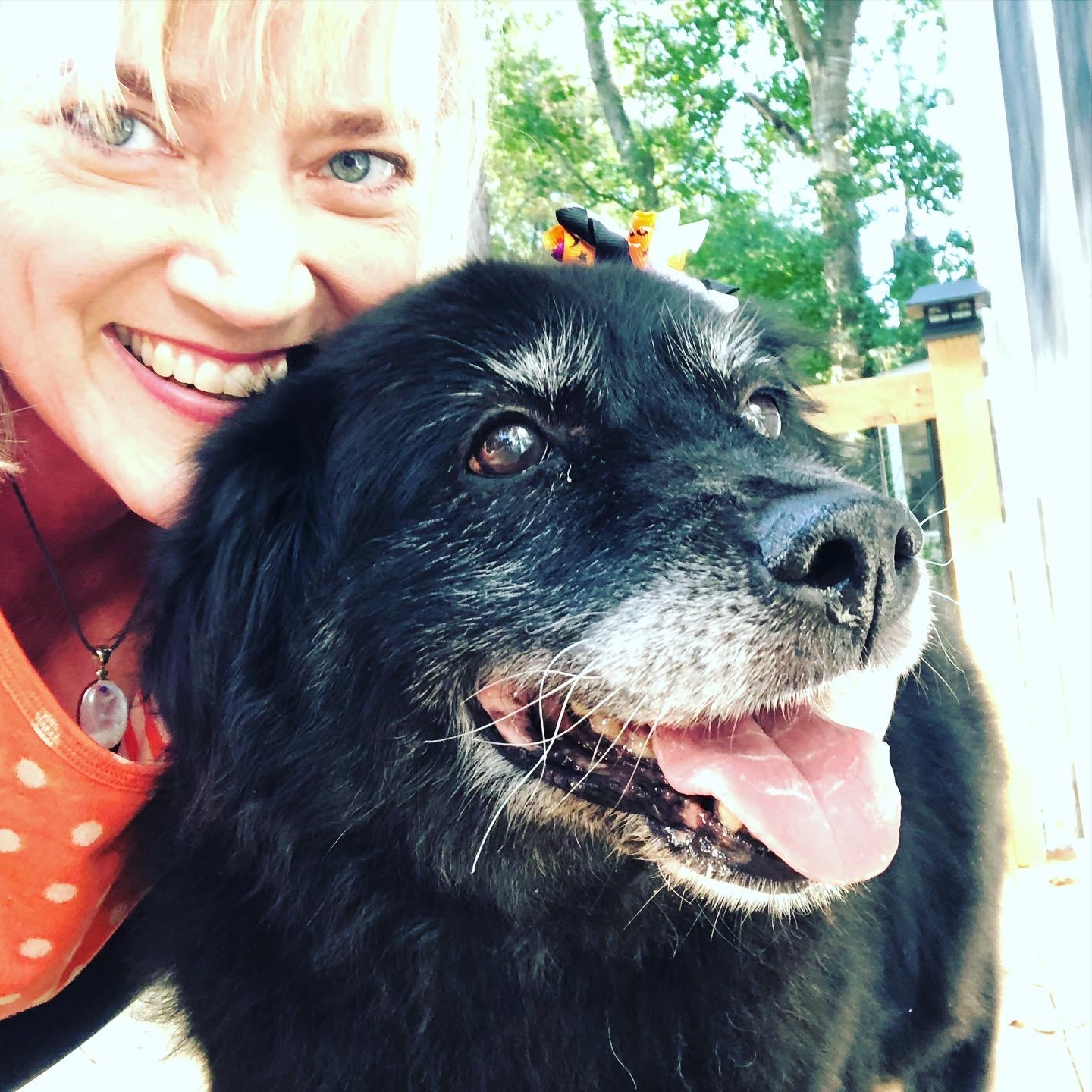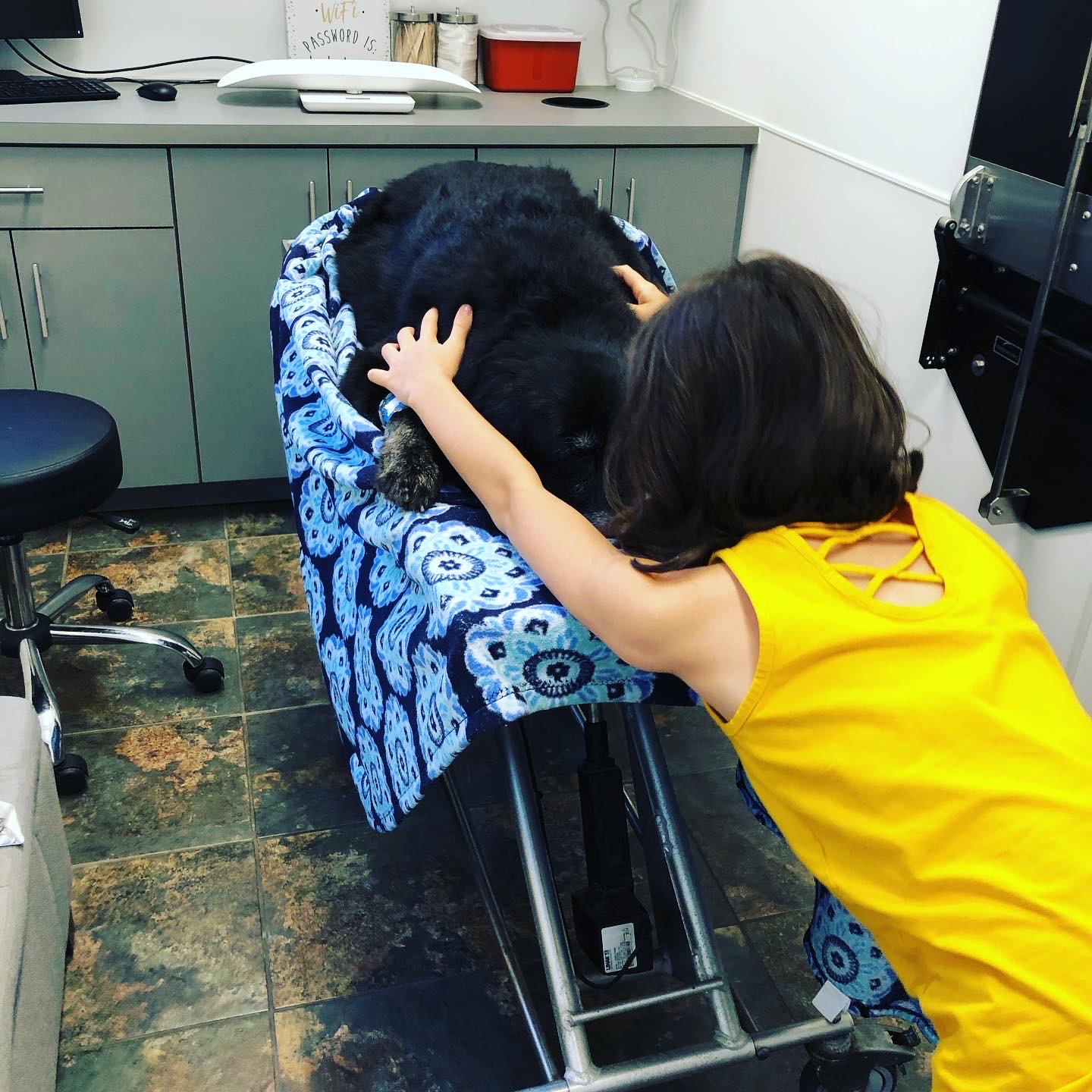When I was eight years old, Beau, my beloved black standard poodle, was hit by a car while my family was on vacation in Florida. I remember seeing her bleeding, and I distinctly remember my mother’s grief and anguish, sobbing, and wailing that her precious show dog was hurting. Miraculously, Beau survived that accident and made the long drive back to Connecticut with the three of us.
About two months later, I came home from third grade, excited to retrieve my afternoon snack and sit in our ‘80s yellow, orange, and avocado kitchen and talk with my mom about my day at school. When she greeted me at the door, she had a long face and tears in her eyes. Beau was gone. She had struggled ever since the accident and my mom had taken her to the vet to be put to sleep. She didn’t discuss it with me (honestly, I don’t know if she even discussed it with my dad, but I would hope so). I was so angry. How could she not have given me time to say goodbye to my beloved dog?
When I was 24, my dad died in the hospital from complications of heart disease. The doctor called us at 10 PM to let us know that he was going into kidney failure. I told my mom we should hop in the car and drive the hour from our suburban home in Connecticut to Columbia Presbyterian Hospital in New York City to be with him. My mom said “No. It’s too late. We will go tomorrow.” I don’t know if she made this decision from denial, shock, or exhaustion. He died at 4 AM that following morning. Once again, I was angry. He was all alone when he died and I’ve always regretted not being with him.
About two months after his funeral, my mom relocated to Clearwater, Florida to live near her sister. I remember driving Dad’s ashes down in the car with us, precious cargo in the backseat. We brought him in and out of the hotel rooms that we stayed in each night. When we arrived at my mom’s new condo in Florida, my Aunt Dorothy, who was great at infusing humor in difficult situations, carried the box of ashes around the house, showing Dad what his new digs were like. Mom had bought a condo with a view of the golf course, and she knew my dad would have loved that. After we got her settled in, I returned to my home and career in Atlanta, asking her to let me know when she wanted to officially bury Dad’s ashes.
A few weeks later, I got a phone call from her telling me that she had buried him at the local cemetery with my aunt and uncle and my cousins in attendance. She didn’t bother to tell me it was happening nor ask if I was able to join them. I was furious that she would have such an important ritual without me present. I never really forgave her for that.

Last week, Daisy dog, our beloved 12-year-old rescue black lab mix was dying. She was diagnosed with cancer soon after we moved to North Carolina, so we watched her decline over the past two months. On Thursday morning, I knew that her time was getting close, so before my 9-year-old Riley went to school, I made sure to talk with her about it. She said “Mom, you’ll wait for me, right? I want to be here!” Daisy is the fifth pet that has died in our family in the past six years. Riley doesn’t remember Andy Dog and Graham Kitty, other than through photos and stories. She remembers Percy Cat dying (just a few months before my mother died when Riley was only five).
When it was Jasper Kitty’s turn to die back in March, she asked if she could be with us. She had just turned nine and we told her yes. We each took turns snuggling his soft fur and frail body one last time before the vet gave him the final dose of medicine to put him out of pain. We told stories about his crazy shenanigans and all cried buckets of tears, but afterwards, Riley said “I’m glad I was there. It was awful, but not as awful as I thought it might be.”

So, when Daisy died this week, we had planned for it to be at our home, with the vet coming here on Friday when Riley would be out of school. But Daisy lost function of her back legs by mid-afternoon on Thursday and was unable to move. We made a quick decision as soon as Riley got home from school, to take her up to the vet and release her from her pain. Our sweet neighbors helped us to roll Daisy into a blanket and gently load her into my car so that she would be more comfortable, I let Riley ride in the front seat with me (even though she’s not supposed to do that yet). I cried the entire 10-minute drive to the vet clinic, and Riley sat in the front seat with her hand on mine, comforting me. We called Eric via FaceTime, so that he was able to say his goodbyes to Daisy dog. When it was over, Riley once again said “Thanks, Mom, for letting me be with you when Daisy died. It helps to know she is no longer suffering. I’m glad I got to say good-bye.”

Grief is hard. Loss is painful. Losing a beloved human or pet is devastating.
And, it’s part of life.
The more we can acknowledge death head on, the more resilient we become when faced with it.
Grief rituals help us to process the emotions that arise when we are faced with a devastating loss. It’s healthier for our minds, bodies, and spirit to grieve deeply and fully for a period of time. Then, when the fog lifts, it’s easier to resume walking in the world because you’ve had sacred space and time.
No one prepared my mom to face death and loss. She grew up in an orphanage with little emotional care or support. As a result, she didn’t prepare me to face death and loss. I chose differently for my daughter. I chose to break the pattern of denial and avoidance and instead go straight to the heart of the matter. My desire is for my daughter to have greater emotional intelligence—and thus develop resilience—than either me or my mom had access to in our early years.
Rituals matter. Endings matter. Please remember this the next time you experience loss and reach out if you need support in designing a sacred celebration to honor the occasion.
Elizabeth
2 comments
This truly is an important lesson. When my son’s beloved cat died, the cat was with him several states away from us. This cat had been with our son through a lot of trauma, and I knew how very hard losing it would be for him. I created a video of me lighting a candle for the cat, and thanking it for how much it had meant to him and our family. I don’t think my son will ever forget it. So even if we are distant, we can find creative ways to be there. Sadly, Covid-19 is causing families to come up with similar ways to process death. Thanks so much for writing this, Elizabeth. Cool that you learned this well enough to teach it!
Judy, what a lovely way to honor your son’s beloved cat! Such a lovely ritual that meant so much, I’m sure. Thank you for sharing this!